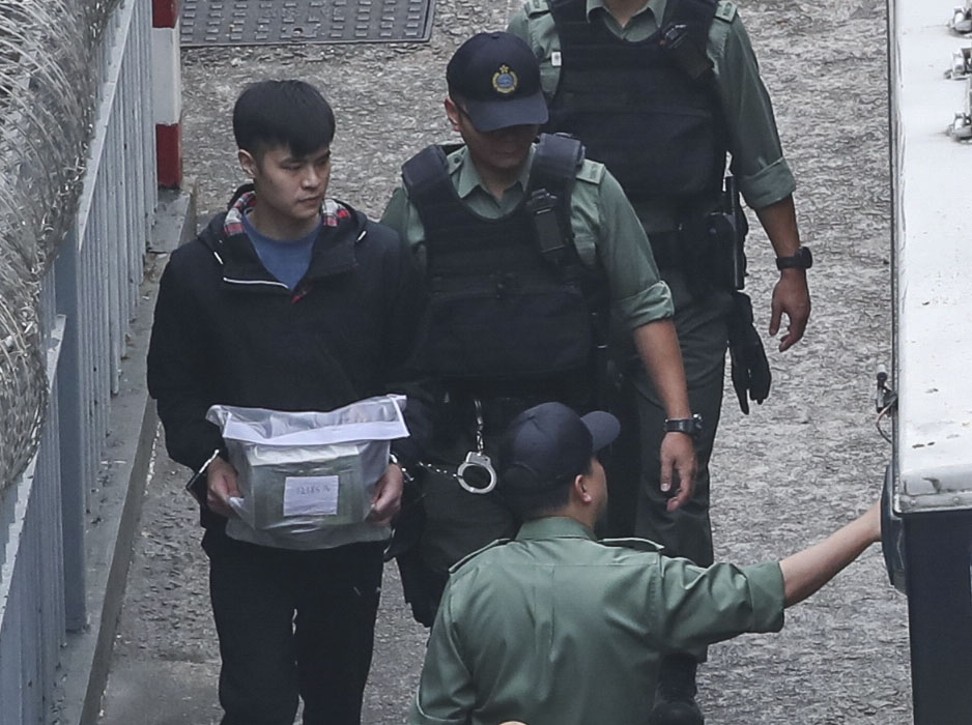
Hong Kong murder accused considered fleeing to Australia but flight time put them off
Taiwan thought to be best option for escape as mainland China was ruled out over visa issues
Three Hong Kong men accused of murdering an acquaintance and fusing him in a “concrete coffin” considered fleeing to Australia but thought the long travel time would increase their chances of being arrested, the High Court heard on Thursday.
Instead the trio, Keith Lau, Tsang Cheung-yan, and Cheung Sin-hang, fled to Taiwan after the death of Cheung Man-li.
Lau told the police after his arrest that he and his co-defendants took flight time to Australia into account when they made their plan to escape. Believing it would take far longer than they had, the three men concluded it would be too much of a risk.

“We might get arrested as soon as we alight the aircraft,” Lau told the officers in an interview.
Lau said the three men also discussed mainland China as a possible destination, but Lau did not have a visa to travel to the mainland.
While in Taiwan, they read about the death on the news, and pointed out mistakes in the reports, he recalled.
Lau, 23, Tsang, 28, and Cheung Sin-hang, 26, denied murdering Cheung Man-li, 28, also known as Ah J, in Flat 9D of the DAN 6 industrial building in Tsuen Wan on March 4, 2016.
Lau’s recorded interviews with the police, in which he continued to lay the blame for the killing on his co-accused, were played to a seven-member jury on Thursday for the second day running.
Suspects talked about eating murder victim, Hong Kong body-in-cement trial hears
While the court had previously heard Tsang accuse Lau of being the “mastermind”, Lau told police that Tsang and Cheung Sin-hang went out of their way to make sure Ah J was dead, even though Lau said he could still feel the victim’s pulse after the initial attack.
“There is a feeling that after they had initiated it, they wanted to carry it out all the way through,” he told police, saying the pair were driven by greed to attack Ah J.
Prosecutors said someone had covered Ah J’s mouth with a pair of women’s underwear soaked in chloroform on the day of the alleged murder, before Tsang injected alcohol into the victim’s body.
Lau said even though Ah J was not dead, Cheung Sin-hang and Tsang believed they had reached “a point of no return”.

After Ah J’s death, the trio encased his body in a “concrete coffin” they had built by using wooden boards and cement. The trio have pleaded guilty to the unlawful burial of Cheung Man-li.
During the recorded interview, the jury heard Lau tell police officers that Tsang, who suggested draining Cheung Man-li’s blood, had tried cutting the body up afterwards, but without success. It was then that the trio stuffed the body in the “concrete coffin”.
However, the concrete could not mask the smell of decomposing flesh, Lau said, and when they tried to move the slab on March 9, it became clear that it was too heavy to be moved downstairs.
Who really killed Hong Kong’s body-in-cement murder victim?
Tsang, he said, brought home a device which they thought could break the cement, and enable them to retrieve Ah J’s body. Tsang also bought Chinese medicine to boil, in an attempt to cover the smell, Lau said.
The trio knew they had to flee, after 20 cans of air-freshener failed to combat the smell emanating from the body, he said.
The trial continues before Mr Justice Patrick Li Hon-leung on Friday.

